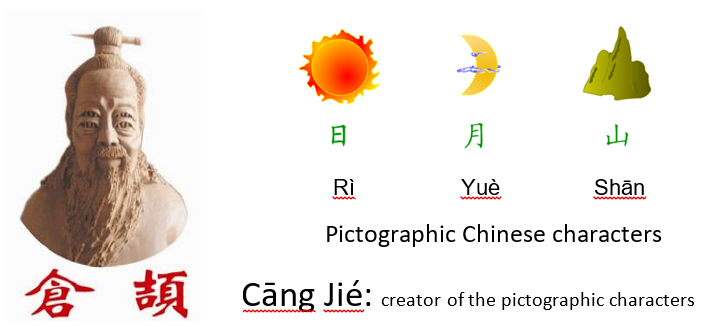Chinese characters-2 formation
Most Chinese characters are the combination of the meaning, form and pronunciation of the character and can therefore show more substantive information camparing with the alphabetic script. This is one of the reasons why many people love Chinese characters and the stories behind them. People find Chinese characters amazing and like to learn to write them. Learning to write characters is fun and can help perople to remember and use them. On the other hand, writing Chinese characters demands a lot of practice and perseverance. That's challenging.
Chinese characters can be classified into four main categories with respect to their basic formation. In their long existence and evolution through the centuries, Chinese characters constantly have been changed in forms based on the needs. You can see the examples of the form-changing in the previous article. The characters are becoming more and more stylized. The original recognizable scripts such as, sun, moon, vehicle, horse, turtle, fish, bird, maintain, fire etc., gradually lost their visual forms like drawing. The complex shape has been kept simplified to meet the needs.
The four categories of Chinese characters are:
1) pictographic characters 象形 iàngxíng
2) self-explanatory characters 指事 zhǐ shì
3) associative compounds 会意 huìyì
4) pictophonetic characters 形声 xíngshēng
As the word 'pictographic' suggests, the pictographic characters depict the shapes of things. Most of the characters denote concrete things that exist in the natural world or in real life. For example:
人, 日, 月, 山 火, 水, 口, 木, 田
rén, rì, yuè, shān huǒ, shuǐ, kǒu, mù, tián
person sun moon mountain fire water mouth wood (rice) field
After pictographic characters were formed, the formation of other Chinese characters became an easy task. For example, in order to obtain the character "刃" (rèn, blade), all we need to do is to add a dot to the character "刀" (dāo, knife) to indicate the blade's location. The character "木" (mù, wood), originally written "" (, tree). How can we use Chinese characters to denote the root of a tree? All we need to do is to add a horizontal stroke beneath "木". The result is the character "本" (běn, root). Today, the word "本” is used in the words such like "本来" (běnlái) "根本" (gēnběn) to indicate 'originally, root/ basic'. The followings are some more self-explanatory characters:
上, 下, 刃, 本, 甘, 母,
shàng, xià, rèn, běn, gān, mǔ,
up, down, blade, original, sweet, mother
Associative compounds characters are formed by putting several simple characters together orderly. By doing this, some characters become components of the new character, usually they become one of the 'radicals', and they are the basic elements to form Chinese characters. There are about 214 radicals in modern Chinese. Let's have a look at some examples, two "人" (people) characters written together gives us the character “从" (to follow), which depicts one person walking behind another and means "to follow". When three ”人" characters are written together, we get the character "众" (), which means "many people". Two "木" characters written side by side yields the character "" meaning "many trees". When three "木" characters are written together, we get the character "森", meaning "forest". Let's take "休" as another example. This character is formed by two characters: "人" person and "木" tree. When written together, we get a picture of someone leaning against a tree and resting, thus denoting the meaning of "te rest". As mentioned, when characters are written together, one might becomes a component (radical). Here it is the character "人“, its form is then changed into "亻". More words:
从, 众, 林, 森, 休, 男, 明, 卡
cóng, zhòng, lín, sēn, xiū, nán, míng, kǎ
follow, crowd, woods, forest, rest, male, bright, card
Pictophonetic characters are actually also a kind of compound characters, in which some components represent the meaningand others represnt its pronunciation. For example, in the character "伸" (shēn), "亻" denotes that the character's meaning is related to "person", while "申" (shēn) denotes that the character's pronunciaton is "shēn". the component that denotes the meaning is called the semantic element (形旁); which the component that denotes the pronunciation is called the phonetic element "声旁". Pictophonetic characters express not only the meaning of characters but also their pronunciation, making them highly convenient. Therefore, most Chinese characters - about 84% of all Chinese characters - were formed using the pictophonetic method of character formation. More pictophonetic characters:
妈, 蚂, 骂, 清, 情, 请
mā, mǎ, mà, qīng, qíng, qǐng
mother, ant, scold, clear, affection, please



